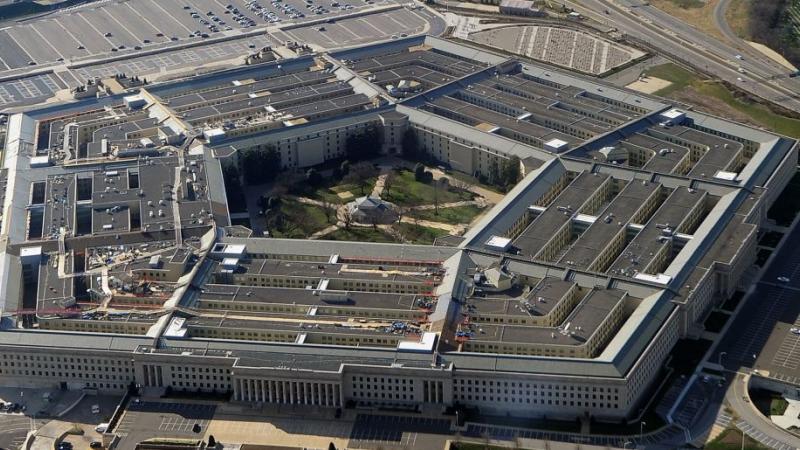War in the tunnels: U.S. military prepares for subterranean combat
"An enemy underground site can turn the tide of battle," Pentagon official said. "We're making sure it doesn't happen to us."
While the U.S. military continues to focus on traditional above-ground combat domains, defense officials have ramped up efforts to address the murky and increasingly threatening realm of subterranean warfare.
"Our adversaries have adapted their capabilities against our weaknesses by expanding their use of underground facilities," Army officials wrote in a November publication on subterranean operations, noting that more than 10,000 "tactical tunnels" exist around the world.
The underground sites will be encountered more frequently during armed conflict, according to two modern war experts.
"With a trend toward greater urbanization, it will become even more difficult to avoid the subterranean environment," wrote two retired officers, Maj. John Spencer and Col. Liam Collins, in an essay for the Association of the United States Army. It is "both folly and fantasy," they wrote, "to believe soldiers will be able to avoid warfare's reach into the underground."
Subterranean warfare has long been a feature of armed conflict. Throughout ancient, medieval, and modern times, tunnels were used for various purposes, such as offering passageways in and out of besieged cities and forts.
During the Vietnam War, Viet Cong guerrillas built sophisticated, wide-ranging and multilevel tunnels that included decoy sections designed to fool the enemy. During the Cold War, North Korea built a tunnel that could allow 30,000 troops per hour to swarm into South Korea. More recently, when the United States and its allies invaded Afghanistan in 2001, Taliban and al-Qaeda fighters escaped into the mountainous cave complexes that the mujahideen used when evading Soviet forces in the 1980s.
Those types of structures, one Pentagon official told Just the News, are growing more prevalent and complex. And, despite being out of sight, they do not remain out of war planners' minds.
"Fortunately, there are efforts underway by U.S. military and supporting organizations to prepare for underground warfare," Spencer and Collins wrote.
The Defense Advanced Research Projects Agency (DARPA) in 2018 launched a high-stakes competition, the Subterranean Challenge, pitting robotics teams against one another to seek solutions via an extensive, three-year quest that will award millions of dollars in prize money.
"The Subterranean Challenge seeks to better equip warfighters and first responders to explore human-made tunnel systems, urban underground, and natural cave networks, while decreasing risk to human lives," DARPA officials wrote in a statement.
While the robotics teams pursue the competition that ends in August 2021, the Army this year built a subterranean warfare training facility at Fort Bragg, N.C. Located at a site known as Range 68, the facility features more than a kilometer of tunnels, with pitch-black surroundings, tight spaces, and unexpected elements that soldiers might encounter in the dark domain.
"In a stressful situation, you always revert to what you know," Wolf Amacker, Fort Bragg Installation Range officer, told an Army interviewer when explaining why the training was important. "If you know your training and are well trained, then in stressful situations, you will revert to that training. That's exactly what we want soldiers to do."
Hence, the new $1.34 million practice site — and its emphasis on unexpected features.
"As you go through and clear an area, what you tend to find is a tapestry hanging on a wall," Amacker said of the facility. "You move that tapestry and there's a hole in the wall and it leads somewhere. You move a bed and some planks and there is a hole in the floor that leads somewhere."
The facility includes mock enemy command posts to be captured and searched; 30-inch tall crawl spaces; and mock booby traps. It also replicates some technological conditions that will be encountered in the field.
"Radio communications don't work inside this facility," Amacker said. "So, if you're in there and try to radio out for help, just like being 100 feet under the ground, it's not going to work. You have to figure out now how to communicate back to the people on the surface."
Elsewhere, the Army is employing robots and drone scouts to pursue underground functions that could endanger soldiers.
Hazards underground include fire, unseen holes, venomous insects, human waste, and the environment itself.
"Every action a friendly force takes underground may make the environment worse," Army officials wrote in the publication about subterranean operations. "Everything from weapons fire and explosions to the carbon dioxide from soldiers breathing can contribute to an increasingly dangerous environment."
In such cases, officials warned, soldiers could be seriously injured or die before making contact with the enemy.
"If you go deep underground and there's not good air flow you'll die of suffocation," Amacker said while describing one scenario.
The Army plans to begin sending soldiers through the new Fort Bragg facility in late September, while other Defense Department elements host additional training and research.
"You can look at a contested landscape and never know it's there, lurking below the surface," the Pentagon official told Just the News. "An enemy underground site can turn the tide of battle. We're making sure it doesn't happen to us."
















